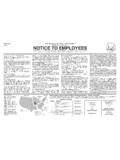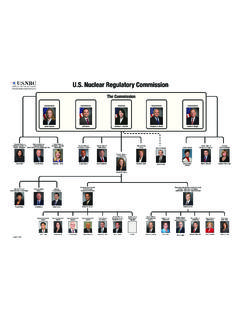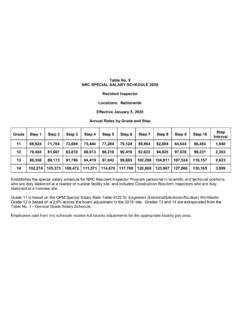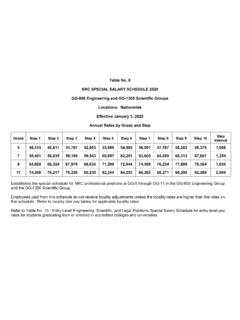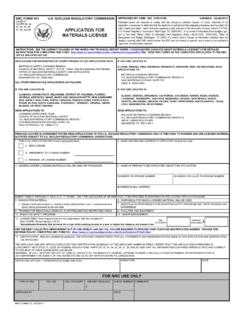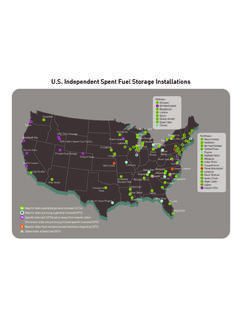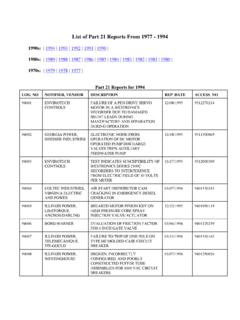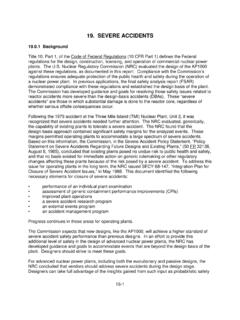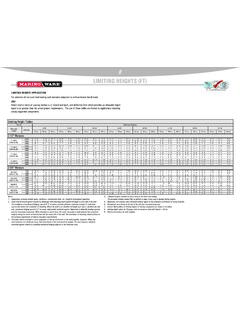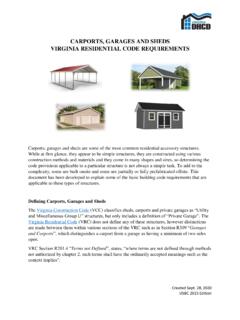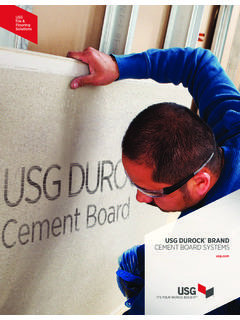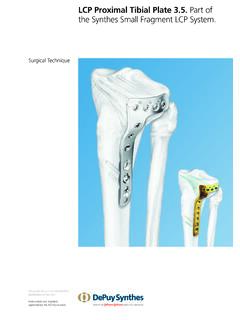Transcription of General Engineering Principles I.
1 General Engineering Principles ISealed Source & Device WorkshopGeneral Engineering Principles I: 1 General Engineering Principles IForces:Tensile and Compressive: Tensile (Tension) - pulling apart Compressive (Compression) - pushing together Forces may be direct, or may be caused by changes in pressure, temperature, or combined : Force perpendicular to the primary Source & Device WorkshopGeneral Engineering Principles I: 2 General Engineering Principles IStrength: Stress = Force/Area (psi or Pa) Strain = Elongation under stress =change in length/original length (in /in )length/original length ( ) Ultimate Strength: maximum stress sustained without breaking - exceed this limit and the material will break.
2 Yield Strength: maximum stress sustained without permanent deformation - the material will stretch and come back to its original Source & Device WorkshopGeneral Engineering Principles I: 3 General Engineering Principles IStress vs. Strain:Sealed Source & Device WorkshopGeneral Engineering Principles I: 4 General Engineering Principles IStrength (cont.):(Graphic See Notebook)Sealed Source & Device WorkshopGeneral Engineering Principles I: 5 General Engineering Principles IStrength (cont.):Sealed Source & Device WorkshopGeneral Engineering Principles I: 6 General Engineering Principles IStrength (cont.)
3 :Sealed Source & Device WorkshopGeneral Engineering Principles I: 7 General Engineering Principles IDuctility: A metal is ductile when it can be drawn out in tension without rupture (Opposite of Brittle metals). A ductile metal must be strong and plastic. Ductile materials have large difference between yield and ultimate strengths. Lead wire is difficult to draw because the strength of lead is Source & Device WorkshopGeneral Engineering Principles I: 8 General Engineering Principles IHardness: Resistance to local penetration, scratching, machining, wear or abrasion.
4 Different measurement scales (RockwellDifferent measurement scales (Rockwell, Brinell, Vickers). Hard materials exhibit brittle, catastrophic failure. Therefore, for very hard materials, there is no indication of whether the component is close to Source & Device WorkshopGeneral Engineering Principles I: 9 General Engineering Principles IBrittleness: Is the property of breaking without much permanent distortionItb dt b ittlf thi It may be due to brittleness of the grain boundaries or of the crystal themselves. Excessive presence of sulfur in steel makes it brittle in elevated temperatures.)
5 When the phosphorus contents are too high in steels, they exhibit brittleness at cold Source & Device WorkshopGeneral Engineering Principles I: 10 General Engineering Principles IElasticity: The elasticity of a metal is its power of returning to its original shape after deformation by a force. Many materials behave to some extent like powerful elastics, and, within limits, will recover their shape when load on them is removedtheir shape when load on them is removed. For example, if the elastic limit of a material were 15 tons per square inch, then with bar of material 1 Sq.
6 In. in area, the material would return to its original length from a load of 15 tons. If this loading was exceeded, the material would permanently Source & Device WorkshopGeneral Engineering Principles I: 11 General Engineering Principles IElongation: When a material is pulled in a testing machine for the purpose of finding its tensile strength, stretch takes place before the bar breaks. The elongation is the amount of this stretch and iselongation is the amount of this stretch and is generally expressed as a percentage. If a metal length of 2 in.
7 Stretched to 2 3/4 in, before fracturing, the elongation would be, {(2 3/4 in. - 2 in.)/2} x 100 = 37 per cent. A good elongation indicates a ductile Source & Device WorkshopGeneral Engineering Principles I: 12 General Engineering Principles IMalleability: This is a property of permanently extending in all directions without rupture by pressing, hammering rolling etchammering, rolling etc. It requires that the metal will be plastic but is not dependent on strength, , lead is a very malleable Source & Device WorkshopGeneral Engineering Principles I: 13 General Engineering Principles IPlasticity: This is rather similar to malleability, and involves permanent deformation without rupture.
8 It is the extreme opposite of elasticityextreme opposite of elasticity. Plasticity is necessary for forging, , steel is plastic when at bright red Source & Device WorkshopGeneral Engineering Principles I: 14 General Engineering Principles IToughness: Is the amount of energy a material can absorb before fractureAfththftlb A measure of the toughness of a metal may be obtained by nicking it, placing it in a vise and striking the end with a hammer. Certain woods are very tough. It is for this reason that hickory is a good material for Source & Device WorkshopGeneral Engineering Principles I: 15 General Engineering Principles IMelting Points: Very important when discussing fires.
9 Lead will usually melt in a fire. Important for seals and gaskets in high temperatures. The seals and gaskets will be rendered useless. Adhesives usually won t survive well in high Source & Device WorkshopGeneral Engineering Principles I: 16 General Engineering Principles IThermal Expansion: Materials expand as temperature increases and contract when temperature No void spaces, such as in source capsules, could cause tension and possible rupture. Thermal cycling causes tension and compression therefore the possibility of fatigue failure.
10 Could be caused by internal pressures (such as in sources) or in a member itself (concrete joints).Sealed Source & Device WorkshopGeneral Engineering Principles I: 17 General Engineering Principles IThermal Expansion: (Cont.)Sealed Source & Device WorkshopGeneral Engineering Principles I: 18 General Engineering Principles IMoments: Compressive forces at one edge and tensile forces at the other edge. Usually of concern when loads are applied Usually of concern when loads are applied perpendicular to the primary axis of a rod or plate.
